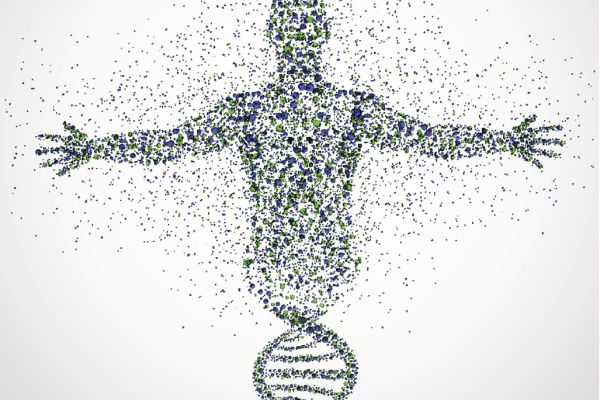Signs and Symptoms of Addiction
Whether the substance involved is crack cocaine or alcohol or a behavior such as gambling, the common denominator of all addictions is continued use despite the development of negative consequences—whether to self, relationships, finances, school or work performance—and the inability to control use. The Diagnostic and Statistical Manual of Mental Disorders (DSM-5), which shuns the term addiction (but nevertheless, confusingly refers to addictive disorders), instead prefers the term substance use disorder, and categorizes 10 distinct such conditions depending on type of drug involved—for example, Alcohol Use Disorder; Stimulant Use Disorder, including use of cocaine; Opioid Use Disorder, including heroin. The DSM notes that all 10 “produce such an intense activation of the reward system that normal activities may be neglected.”
How each type of drug acts in the body is different, but the behavioral symptoms, including those associated with gambling, all overlap. Another common feature is the persistence of changes in brain circuitry beyond any detoxification period; studies show that it can take months or more after stopping use for the brain to rewire itself to respond to normal rewards.
On This Page

Substance use is not, by itself, a disorder. According to DSM-5, widely used as a roadmap to diagnosis, it becomes a disorder when use eludes control and interferes with functioning. Substance use disorder is marked by a pattern of pathological behaviors related to use of the substance.
Substance use disorder is marked by a pattern of pathological behaviors related to use of the substance. As listed in the DSM, they include:
• Being unable to stop taking a substance, even when wanting to cut down or regulate use or having tried several times
• Worrying about the next dose or getting a consistent supply of the substance
• Experiencing intense cravings at any time, but especially in places where the drug was once obtained or used
• Devoting considerable time to getting, taking, or recovering from drug
• Neglecting roles and responsibilities such as work, school or home obligations
• Experiencing interpersonal problems as a result of substance use
• Changing social patterns, withdrawing from family, friends and activities in order to use a substance
• Facing risky situations to become intoxicated or maintain a supply of drug
• Using a substance despite knowing it causes physical or psychological harm to oneself
• Developing tolerance, requiring more drug to get an effect; a common but not invariable feature of addiction, sometimes called adaptation
• Developing the unpleasant physiologic symptoms of withdrawal—shakiness, sweating, queasiness or vomiting, headache—when unable to take the substance. Withdrawal is a highly variable sign of addiction; it occurs with use of some drugs (alcohol, for example) but not others (cocaine); however, it often drives continuing use. Withdrawal can require medical treatment when a person abruptly stops heavy substance use.
Along with the diagnostic signposts of addiction, those addicted typically display a number of other behavioral characteristics:
• Secretiveness about activities and relationships as well as private space, to conceal drug use
• Sudden changes in activity patterns, refusing participation in activities once enjoyed
• Lying about whereabouts, absences, consumption habits; making excuses for unusual behavior
• Loss of energy or motivation
• Neglect of appearance
• Stealing to support drug purchases.
A cardinal sign of addiction is not being unable to control consumption of alcohol/drug—even when wanting to. In addition, addiction is typically marked by urges or craving—wanting a substance so badly it becomes difficult to think about anything else.
Intoxication has its own distinctive psychological manifestations—from belligerence and mood lability to impaired judgement and “absent presence.” They result from the effects of the substance on the central nervous system. Those who are high also display perceptual disturbances, problems with attention, disrupted thinking patterns and easy confusion, as well as difficulties relating to others.
In the grand scheme of things, addiction is considered an attempt—a nonproductive attempt—to solve a problem; it offers relief from shyness, relationship difficulties, shortage of opportunities, losses and failures of any kind, and much more. From that perspective, it is a sign of inability to cope with a stressor; behind the psychology of addiction is a sense of powerlessness, and it always a sign that better stress-management skills are needed.
Addiction can reveal itself in physical signs, as well as psychological and behavioral ones, although they are not diagnostically specific for the condition. Substance users may have dilated pupils or glazed eyes, slurred speech, and ramble when they talk. They can show changes in movement patterns—depending on the type of substance involved, psychomotor retardation (heroin) or jumpiness (cocaine). Substances users often become so preoccupied with getting and using that they forego eating and suddenly lose weight. Another sign of addiction is a shift in sleep and wake patterns—sleeping too much or too little, or at unusual times.
Addiction involves a great many contradictions, including behavioral choices in spite of oneself. One of the most puzzling aspects of addiction is the way it prompts people to violate their own codes of behavior, their own sense of self. Neuroscience sheds light on the phenomenon: Studies show that as the drive for the drug and its reward becomes increasingly inscribed in brain circuity, there are corresponding changes in circuity weakening the person’s powers of judgment and control. People who are addicted often act in ways that even they do not endorse—lying, stealing, socially withdrawing, becoming suspicious—and even the conscientious can become neglectful of obligations.
Those who become addicted are usually acutely aware of their own behavioral shifts and especially how they are disappointing others, even as they rationalize away their behavioral anomalies. Recovery often requires addressing the guilt and shame people feel over their own addictive behavior. Left unaddressed, such painful negative self-related feelings can seek quick relief in drug use before impulse control is regained.
Addiction involves both the mind and the body—and every other facet of existence, because they all interact. There is no real distinction between physical addiction and psychological addiction. Substances of abuse affect the reward system of the brain, mediated by the neurotransmitter dopamine. Substance-induced physical changes to the part of the brain that responds to dopamine (nucleus accumbens, or striatum) progressively power the motivation to seek the drug again and again, and, at the same time, lower the capacity for self-control. The physical changes to the pleasure-experiencing centers of the brain induce physical changes to the prefrontal cortex, weakening the capacity for decision-making and impulse control.
Substance use becomes an addiction when a person can no longer control the use, when they want to cut back but can’t manage to, and when use begins to interfere with functioning—affecting work, school, relationships, and sense of self. That point differs from one person to the next, due to many biological and situational variables influencing response to a substance. Addiction is an individual response to repeated use of a substance (or activity) that triggers an outsize activation of the brain’s reward center, but just as not everyone who uses a substance becomes addicted, addiction does not hinge on any specific amount of drug consumed.
While the best-known signs of addiction may be physical changes in a person—weight loss to the point of emaciation, the red face of problem drinkers—those occur late in the course of substance use. The early signs of addictive problems are behavioral. Experts identify at least five early warning signs of addiction.
• rationalization: justifying use because of a “real need” the substance is serving, whether it is aiding social experience or fostering sleep.
• personality changes: unpredictable displays of hostility, suspicion, or irritability, or rapid mood swings
• relationship shifts: wearing out longstanding relationships, rapidly turning to new sets of friends
• deteriorating work performance: increasing difficulties concentrating on work showing up in simple mistakes and, often, new difficulties with coworkers
• emergence of a “shadow self”: violating deep values as drug use affects the prefrontal cortex of the brain.
You look forward to getting high. You devote increasing amounts of time planning to get drugs or worrying about where your next dose is coming from. You find yourself rummaging through other people’s medicine cabinets in search of drugs.
Your involvement with drugs begins to have negative consequences. It interferes with your functioning—you start missing obligations and events. You make excuses for yourself—to yourself and to others, about why you need the substance, about not showing up, about making mistakes at work, about how tomorrow will be different. You break promises to yourself that you will stop using—a source of self-contempt that has a way of perpetuating addiction by needing relief in the high of substance use. You drift away from longtime friends. You get secretive about your activities. You get defensive or belligerent with loved ones or colleagues who want to know what’s going on; they notice peculiarities about your behavior or appearance that you are not likely to recognize. You maintain a belief that you can stop any time you want—despite evidence to the contrary.
Addiction and substance use disorder are two terms for the same condition. The DSM adopted the term Substance Use Disorder in 2015, when it published its fifth edition. As the manual explains: “Note that the word addiction is not applied as a diagnostic term in this classification, although it is in common usage in many countries to describe severe problems related to compulsive and habitual use of substances. The more neutral term substance use disorder is used to describe the wide range of the disorder, from a mild form to a severe state of chronically relapsing, compulsive drug taking. Some clinicians will choose to use the word addiction to describe more extreme presentations, but the word is omitted from the official DSM-5 substance use disorder diagnostic terminology because of its uncertain definition and its potentially negative connotation.”
There are both physical and behavioral clues that someone might be experiencing a problem with substance use. None of them is definitive, and there may be many other causes, but the presence of multiple signs merits special consideration. On the physical side, a sustained neglect of personal appearance, poor hygiene, and listlessness may be signs. Bloodshot or glazed eyes and slurred or rambling speech can result from drug use. Sweating, body tremors, or even vomiting can be signs, as can weight loss or gain.
Behaviorally, significant changes in activity patterns, social groups, and school or work performance could result from problems with drug use, as can an increased desire for privacy. Behavior in general can become unpredictable, and people may frequently call in sick to work or school. Drug use can push people to borrow or steal money or other valuable items, and to neglect ongoing financial obligations. Irritability and mood swings, problems recalling information, and shifts in sleep-wake patterns are other common accompaniments of substance use. Also among the warning signs is a tendency for those experiencing problems to deny or get highly defensive about observed changes in behavior.
Alcohol use is popular on social occasions, but it can be especially tricky to notice when social drinking slides into alcohol use disorder. It may be that a person consumes more drinks than usual in one sitting. Or a person might start consuming alcohol before a social event, or even early in the day. People developing problem use might look for socially acceptable reasons to have a drink, or they might start concealing their alcohol consumption from others around them.

At some point, addiction becomes a trap of endless repetition that loses whatever allure it once held. As addiction progresses, the psychological and life problems it causes tend to increase—and the trap can feel too deep to climb out of. However, it is almost always possible to stop use and begin recovery.
The experience of problems is central to the diagnosis of addiction. As repeated use of a substance accelerates motivation to seek out and use the agent, people typically suffer negative physical and psychological consequences and, in neglecting roles and responsibilities, experience difficulties and disruptions in their family, social, and work lives. They may also face increasingly dangerous situations in pursuit of a substance supply. Independent of the addictive process, problems can also develop from the taking of any chemical substance.
Illegal drugs pose special risks of toxic contamination and/or accidental overdose as a result of substitution with underground agents of unknown potency. The recent rise in opioid deaths, for example, is attributable to a shift from prescription painkillers to the cheaper and often more readily available street drug heroin. Unbeknownst to users, illicit drug manufacturers often adulterate heroin (and the stimulant cocaine, and many other substances of abuse) with the synthetic painkiller fentanyl, which is not only cheaper but 30 to 50 times more potent than heroin, increasing the likelihood of respiratory problems. According to the U.S. Centers for Disease Control and Prevention, fentanyl is the drug most often involved in fatal overdoses in the U.S.
While consumption of any illicit drug can be dangerous from a toxicological perspective, it can also create problems from a behavioral perspective. Intoxication with alcohol is a major cause of traffic accidents and violence to others.
There is considerable confusion even among professionals about many of the terms relating to addiction, in part because many terms are used broadly in popular culture but have more specific clinical meaning, and also because, historically, the psychiatric diagnostic bible, the DSM, has used various terms, including dependence, to mean addiction, with the intent to avoid the stigma attached to addiction.
There is an important distinction between drug addiction vs. drug dependence. The term dependence refers to the fact that the brain has adapted physiologically to the substance of abuse. That adaptation, achieved through changes in brain receptor sensitivity and neurotransmitter balance, is manifest in tolerance—requiring larger doses of the agent for effect—and in withdrawal, the onset of any array of unpleasant symptoms when the substance is abruptly discontinued. Dependence specifically refers to the effects of the process of neural adaptation to a psychoactive substance. It is a common feature of addiction, but not the totality of the more complex disorder.
It is possible to be dependent on a substance without being addicted. Physiological dependence can occur with many different kinds of substances, including common medications. It’s also possible to be addicted without being dependent. Tolerance and withdrawal are not universal features of substance use disorder; hallucinogens, for example, do not create tolerance or withdrawal symptoms.
Psychological dependence is a term sometimes used to indicate the mental processes of addiction, but it has no real meaning given current understanding of the way the brain works. There is no real difference between physical addiction and psychological addiction. Addiction is one of those conditions that demonstrates it is not possible to distinguish between physical and psychological aspects of behavior.
Nevertheless, some people erroneously believe that processes such as withdrawal are distinctly physical while other feature of addiction, such as drug cravings or the inability to stop using a substance, are purely psychological. In fact, inability to regulate use results from a physiological process—progressive weakening of the neural circuitry in the brain’s executive control center in response to repeated use of a dopamine-activating substance. Cravings, or deep desire for a substance, arise from alterations in reactivity patterns of nerves in the brain’s reward center.
Confusion arises in part because of historical misunderstanding: It was once thought that withdrawal was the defining feature of addiction and every other aspect of addiction did not reflect physical processes. It is now known that withdrawal symptoms are not an invariable feature of addiction—they do not occur with addiction to hallucinogens, for example—and that all facets of addiction reflect physical changes in brain circuitry, and those changes are reversible after substance use stops.
Cravings are intense desires for a substance and motivate the repeated seeking of the substance and its effects. They are typically viewed as a sign of entrenchment of the addiction process. Cravings intrude on thought processes, create considerable distress, and focus attention on immediately satisfying the desire for the substance. Cravings can be seen in brain imaging studies as areas of heightened activity in the reward center of the brain in response to specific environmental signals that have been connected to drug use through experience.
Cravings occur when the brain remembers drug use. They can be set in motion by past memories or current environmental cues relating to substance use and are thought to be a force behind relapse, although they are not a clinically consistent predictor of relapse. Any cue with emotional significance registers on the brain's amygdala, which then activates the nucleus accumbens and its dopamine neurons. Their activation gives rise to the sense of motivation, experienced as a highly focused urge to seek the substance.
There is no objective measure of the strength of cravings, but they are highly dynamic and fluctuate, varying in intensity and duration in any individual throughout the course of a day. They naturally rise and fall over several minutes, and many treatments for addiction train people in techniques for outsmarting cravings or distracting themselves from drug cravings until they lessen in intensity.
Withdrawal symptoms occur when drug use is abruptly stopped or the dosage is sharply diminished. They occur because the brain is an adaptive organ (which permits learning of all kinds), and in response to the repeated presence of a psychoactive substance, the brain undergoes changes in neurotransmitter activity and receptor sensitivity in various systems. When use of that substance stops abruptly, cessation disrupts all the adaptations to that substance the brain has made; over time, it will adapt to absence of the drug—but that process takes time.
The clinical manifestation of abrupt cessation of a substance of abuse is withdrawal. Symptoms of withdrawal range from sweatiness, shakiness, tremors, and seizures to upset stomach, diarrhea, and vomiting. Irritability, agitation, restlessness, and sleep disruption are common withdrawal symptoms for many drugs as are muscle cramps, headaches, and changes in blood pressure and heart rate. Drug cravings can be fierce, and fear of withdrawal symptoms often drives continued drug use.
Withdrawal symptoms do not occur with all substances; for example, stopping hallucinogens or marijuana does not typically lead to withdrawal symptoms. Further, the intensity of withdrawal depends on the amount of drug usually taken and the duration of its effects. Withdrawal from such drugs as heroin, painkillers, alcohol, and benzodiazepine tranquilizers can be life-threatening, and medical supervision is generally advised.
The severity of addiction is only partially related to the amount of substance a person uses. The difference between mild and severe addiction is the number of the 11 DSM addiction criteria a person meets. The criteria relate to ability to control use, the negative impact use has on self and life, and the existence of physiological dependence. Substance abuse disorder is considered mild in the presence of two or three criteria. It is considered moderate in the presence of four or five signs. In the presence of six or more symptoms, substance use disorder is considered severe. In fact, sometimes the word addiction is reserved for the most severe cases. Because repeated use of a psychoactive substance often creates the motivation for further use, substance abuse is seen as a self-perpetuating disorder and considered to have a high potential for progression.
A widely used clinical tool is the Addiction Severity Index, which provides a broad view of problems related to substance use. It is a 200-question semi-structured interview that elicits information about problems in seven distinct areas often negatively affected by substance use—medical status, employment and support, frequency of drug use, frequency of alcohol use, legal issues, family/social status, and mental health status. Problems are rated on a scale of 1 to 5 by domain, reflecting how bothered a person is by problems of that type. The ASI is typically used in gauging the type and intensity of treatment a person might need and as a measure of the success of treatment.
Addiction hinges on many factors, only some of which have to do with the properties of a drug. It is possible to get addicted to a psychoactive substance that produces a pleasurable effect, but by no means do the majority of people who consume such substances get addicted. For example, many people are medically treated with opioid painkillers for a period of time and easily discontinue medication when pain remits. Likewise, alcohol is consumed widely around the world with meals and in social situations without resulting in addiction.
One of the most important factors influencing attractiveness of regular substance abuse is the existence of significant opportunities for establishing goals and experiencing meaningful rewards in life. Under such circumstances, drugs can hold little allure. Research demonstrates, for example, that poverty is a strong contributor to drug use, because it imposes many barriers to resources and impediments to achieving individual goals. Similarly, unemployment is a significant independent risk factor for substance use and for relapse after treatment. Researchers have long observed that alcohol use increases during recessions.
Substances of abuse deliver an intense sensation that creates a neurochemically driven motivation to repeat the experience again and again. At the same time, the repeated use of a substance that delivers the intense (if short-lived) reward of a chemical high weakens the decision-making and impulse-control centers of the brain, making it difficult to resist cravings.
Many drug users have made many promises to themselves to stop—and broken them as well, leading them to believe they are incapable of stopping. Users, too, commonly experience negative life effects of addiction—whether to relationships, work, or in other domains, and the painful feelings of self-disappointment and shame trap them in negativity that further erodes hope and finds fast relief in the drug high.
In addition to the direct action of the consumed substance in producing a high, many circuits of brain function adapt their operations to the presence of the psychoactive agent, typically through increases or decreases in sensitivity of neurotransmitter receptors. When that substance is suddenly unavailable, that absence leaves many brain operations exposed and interferes with the various functions. One of the first symptoms to occur is general shakiness.
Wet brain is the colloquial term for the nutritional brain bomb of severe thiamine deficiency that occurs with chronic abuse of alcohol. It is medically known as Wernicke’s Encephalopathy or Wernicke-Korsakoff Syndrome. It arises when people get a large proportion of their calories from alcohol, because the substance interferes with the intestinal absorption of thiamine, also known as vitamin B1. Thiamine is critical for energy production and serves as a cofactor in many enzymatic reactions regulating glucose utilization by mitochondria, the power factories inside all cells.
Because the brain uses a disproportionate amount of energy to power its many high-level functions, thiamine deficiency can lead to damage to the mitochondria of nerve cells. The clinical manifestation of wet brain syndrome are memory loss and confusion, difficulties in muscle coordination when standing or walking—sufferers have a distinctive shuffling gate known as ataxia—and abnormal eye movements and visual changes such as double vision resulting from paralysis of eye muscles. These signs, similar to those of intoxication, exist in the absence of drinking.
Recovery is possible in the early stages, when infusions of the vitamin can restore thiamine reserves. But if thiamine deficiency is left untreated, neurological damage can become irreversible, and people experience a form of dementia. It is marked by hallucinations and other signs of psychosis, difficulties with memory, and confabulation, attempts to make up stories to cover gaps in memory. It is estimated that 80 percent of long-term heavy drinkers suffer from some degree of thiamine deficiency.
Addictive disorders, including alcohol use disorder, most often begin during late adolescence and early adulthood, when there is increased risk of use of many psychoactive substances. Many people “mature out” of addictions by their 40s. According to the DSM, addictive disorders are often wrongly perceived as intractable conditions because those who present themselves for treatment typically have a long history of use and failed attempts to control substance use.
Statistics indicate that most people experiencing addiction achieve complete recovery and do so without seeking clinical services. According to the latest U. S. National Survey on Drug Use and Health, more than 75 percent of people addicted to alcohol or drugs recover. Increasing age is associated with decreased prevalence.
Addiction is often marked by multiple periods of abstinence and relapse. It is common for people to make many attempts at recovery before succeeding, and many experts in fact view relapse as a normal part of the recovery process.














